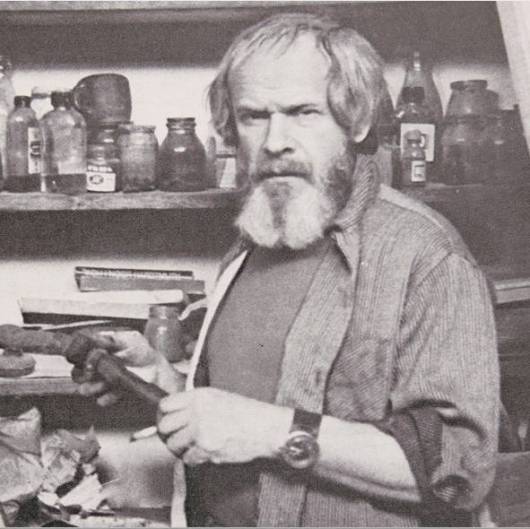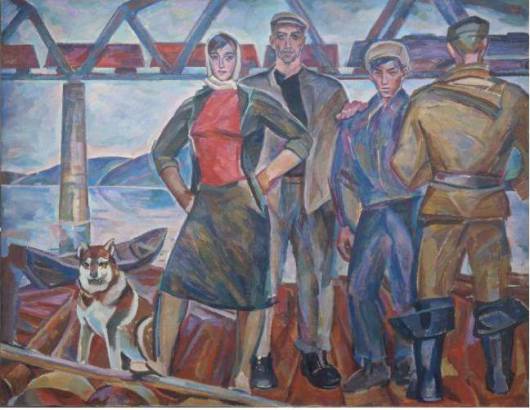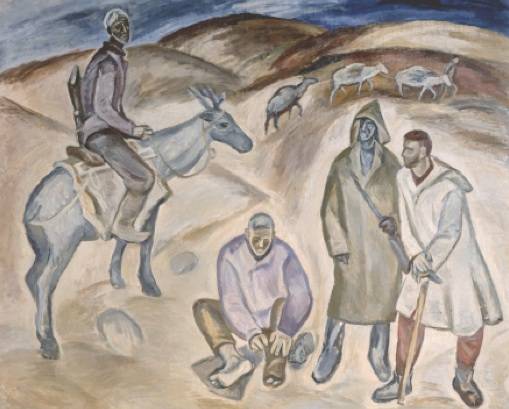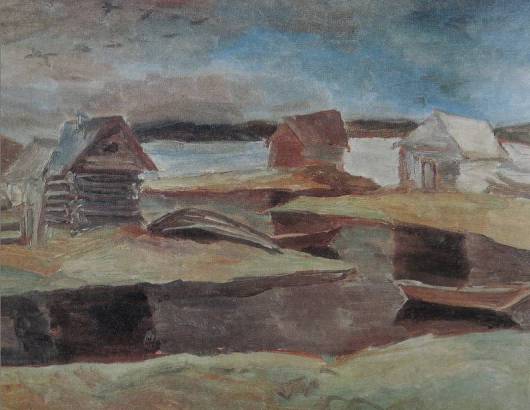High Water
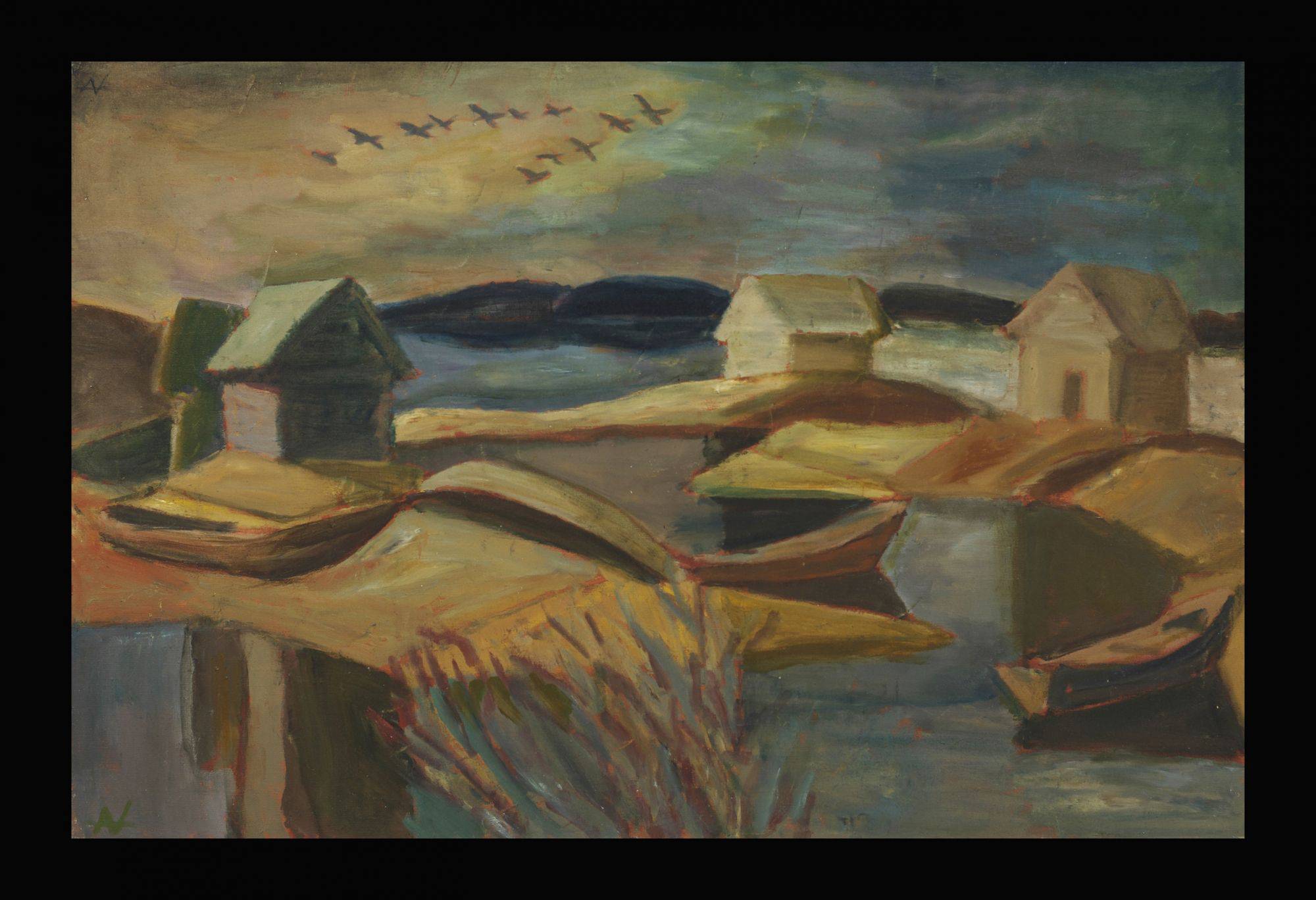
Andronov, Nikolai
1929 - 1998
High Water
Oil on Canvas
100 x 150cm
1985 -1986
Signed twice with Monogram, top left and lower left
PROVENANCE:
Union of Soviet Artists
Soviet State Export Organization V/O Mezhdunarodnaya Kniga, Moscow
With R. Nicolay and Sohn, Birkenhof, Bad Sobernheim, Germany, the official representative for the Soviet State Export Organization for Germany and Switzerland in years preceding 1991.
Schwarz Collection, Nurnberg, Germany
Wolfgang Baum Collection, Birkenhof, Bad Sobernheim, Germany
Private Collection, England
EXHIBITED:
Basel Art Fair, 1988, exhibited by R. Nicolay and Sohn
LITERATURE:
Certificate from Union of Soviet Artists
Nikolai Andronov in his Moscow studio circa 1970
High Water is an important large-scale masterpiece by the leading post-war ‘Severe Style’ Moscow artist, Nikolai Andronov. Andronov was born in Moscow in 1929 and graduated from the Surikov institute in 1954. Stalin’s death on March 5, 1953 marked the beginning of a new direction for Soviet painting and the emergence of a new style known today as the ‘Severe Style’ or the ‘Severe School’ of which Andronov was a founding member. Nikita Khrushchev came to power and delivered his so-called ‘Secret Speech,’ in which he denounced Stalin’s cult of personality and the brutality of his reign. This instigated the period now known as the ‘thaw’ that allowed increased freedoms in many areas of Soviet life including artistic production.
In the early 1950’s and after Stalin’s death and the ‘thaw,’ exhibitions of Western art came to Russia for the first time including shows of international contemporary art, Picasso and Abstract Expressionism. Nikolai Andronov, along with artists such as Geli Korzhev, Viktor Popkov, Pavel Nikonov, Pyotr Ossovski, Victor Ivanov and Tair Salahov rejected the happy cheerful subject matter of Socialist Realism and drew upon Soviet art of the 1920’s for inspiration and created the ‘Severe Style.’ They abandoned the polished classical style that was fashionable at the time and practised by artists such as Aleksandr Laktianov and presented a subject matter that they felt better reflected the grim austerity of post war Russia. Monumental paintings by Andronov, Korzhev, Popkov and Salahov used subjects drawn from daily life with simplified form, colour and a dramatic cinematic manner.
Raftsman, 1961, Nikolai Andronov, Tretyakov gallery.
Andronov’s paintings are characterized by: - a sense of unvarnished truthfulness, grittiness, aloofness, formal qualities and devices. The paintings are often on a large scale which led to the ‘Severe Style’s’ alternative name of Monumentalism. Andronov utilized a simple palette of muddied greys, browns and earth tones.
The artist travelled around Russia drawing his subject matter from the reality he encountered. He admired the leading 1930’s artists such as Kuzma Petrov-Vodkin, Alexander Deinika and Yuri Pimenov and the Italian Neo-Realist cinema. The polished perfection of the artists of the earky 1950’s was replaced with broad brush strokes and a sketchy rough quality.
|
Pavel Nikonov, Geologists, 1969, oil on canvas, 182 x 225cm.
The Tretyakov Gallery in Krymski Val now has two rooms dedicated to this period where masterpieces by Popkov, Korzhev, Andronov, Nikonov and Ivanov can be seen.
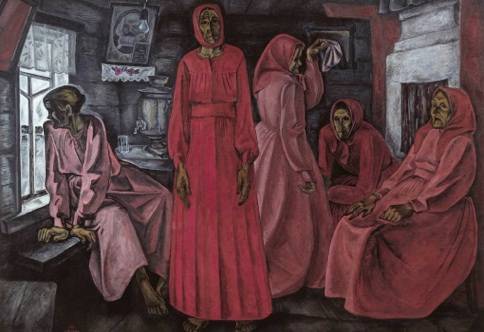
Viktor Popkov, Memories, Widows,’ 1962, oil on canvas, 160 x 234cm.
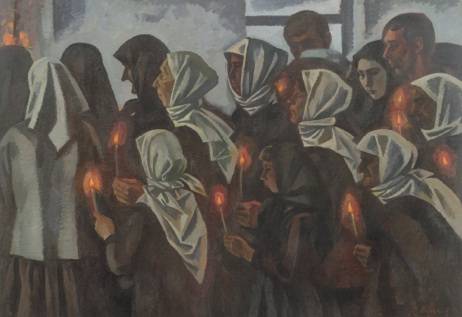
Victor Ivanov, Funeral, 1971, oil on canvas, 153 x 218cm
Nikolai Andronov’s High Water
Andronov delighted in capturing the landscapes he encountered on his numerous travels around the far north of Russia. He often includes dogs or horses and in this painting it is huts, geese and boats. In High Water some geese are flying in a ‘V’ formation over a northern fishing hamlet, most probably Vologda Ferapontov, the Monastary village he visited most summers from the 1960’s. The houses are the most basic of fisherman’s wooden shacks and their small boats are scattered both in the water and beached on dry land. The palate is reduced to a few basic blues, greys and browns and Andronov excludes all unnecessary details and colour. It is clear he is delighted with the elemental landscape and the simplicity of the life of the fisherman in the far north of Russia carving out the most basic of existences.
Andronov painted this view at least twice. There is another different composition but clearly the same view of 1978 which is illustrated in a 1982 book on the artist (Nikolai Andronov, Moscow, 1982, High Water, illus. p 31). This earlier smaller and less finished work is probably a preparatory study for the larger later painting under discussion.
High Water, Andronov, the earlier version, 1978
High Water remains a rare large-scale museum quality painting by Andronov that exits outside of a Russian Museum. Originally belonging to the Union of Soviet Artists it was exported by the Soviet State Export Organization to the Basel Art Fair in 1988 where it exhibited by Nicolay and Sohn before being acquired by a German collector.
Paintings by Andronov are well represented in Russian museums with examples in: - The Tretyakov Gallery, The Russian Museum, The Museums of Fine Art in Omsk and Arkhangelsk, The Abramtsevo Estate, Rostov, Novgorod, Vologda, Kiev, and many museums in Germany and Eastern Europe.
In June 2009 The Museum of Architecture in Moscow (MUAR) held an exhibition, ‘Russia Andronova,’ dedicated to the 80th anniversary of Andronov.

